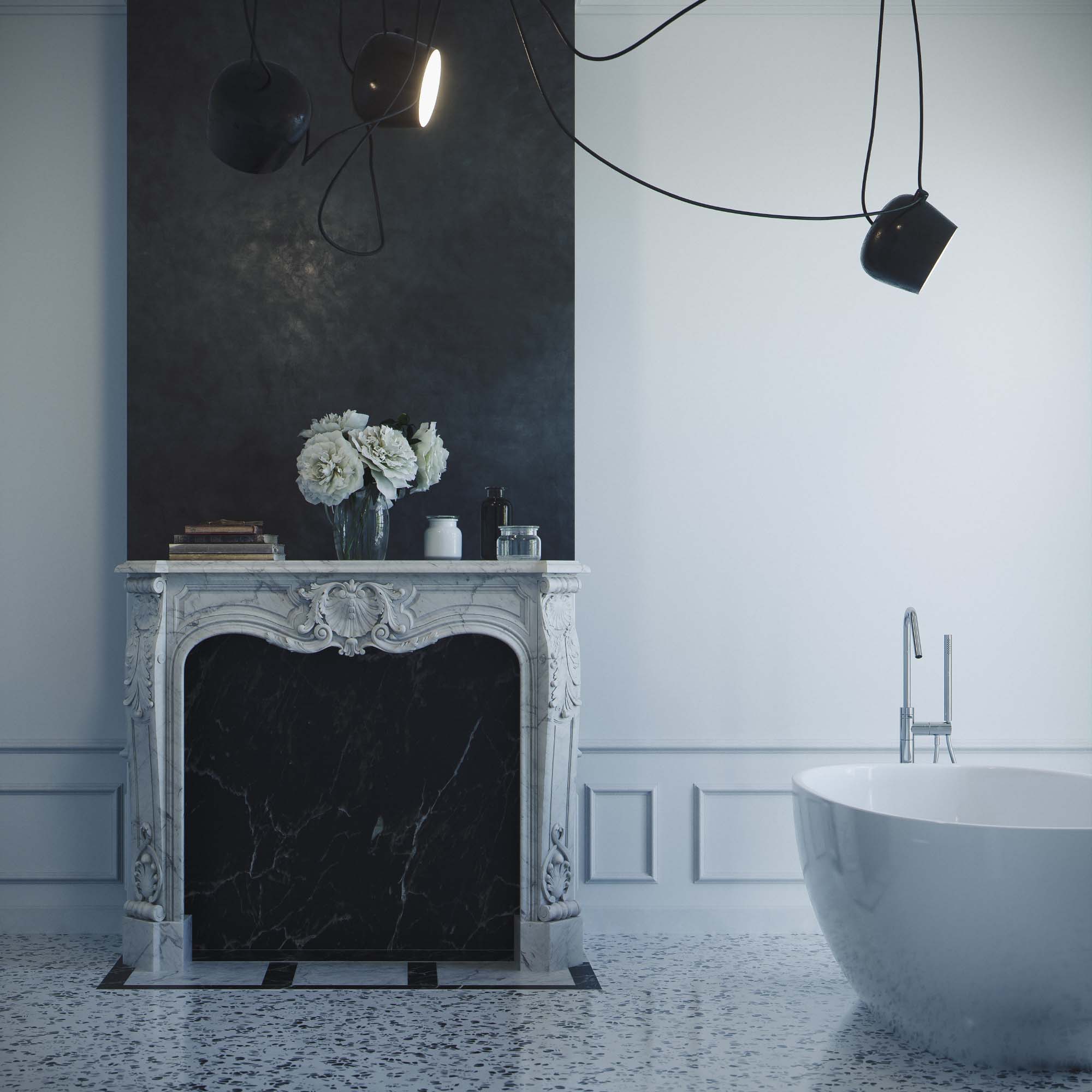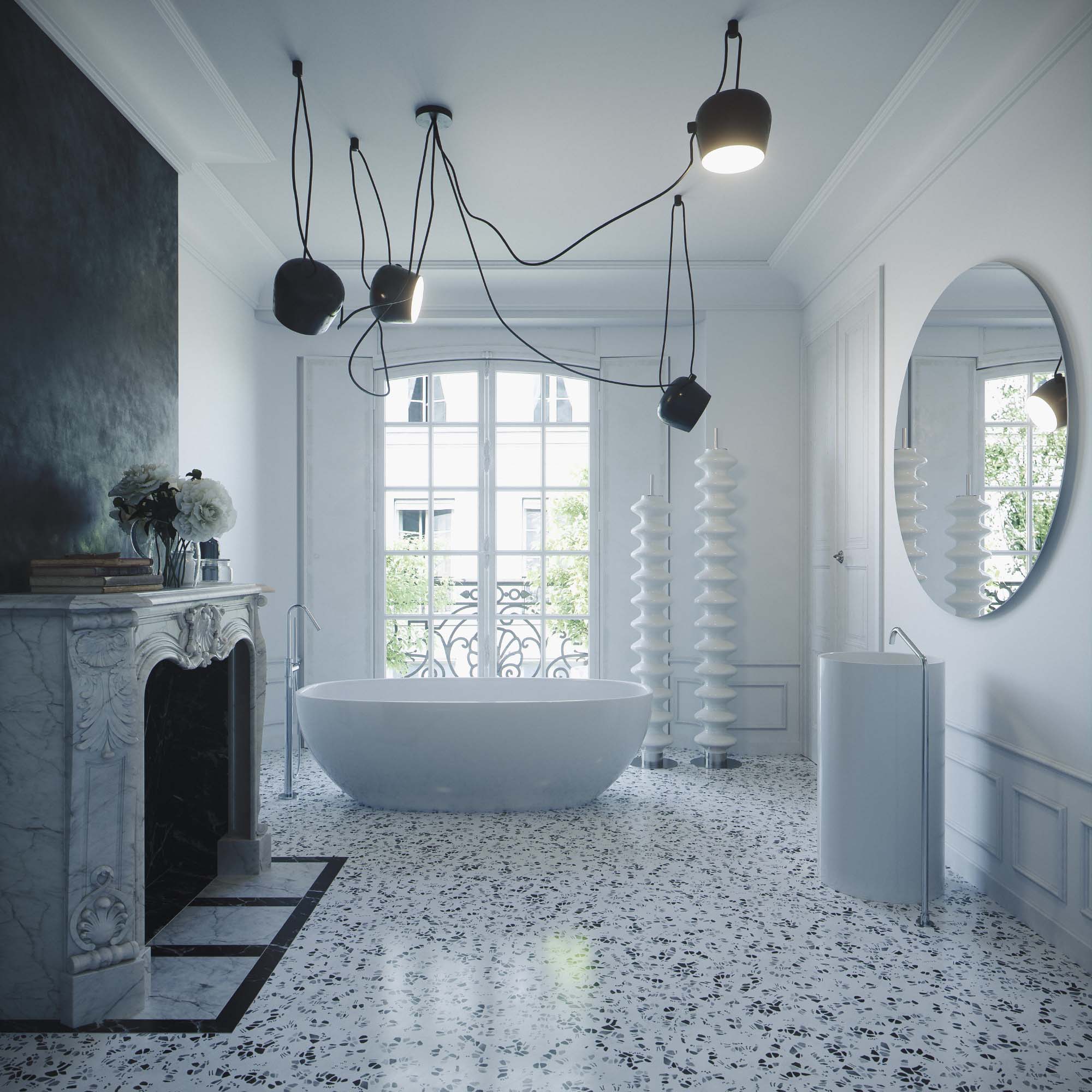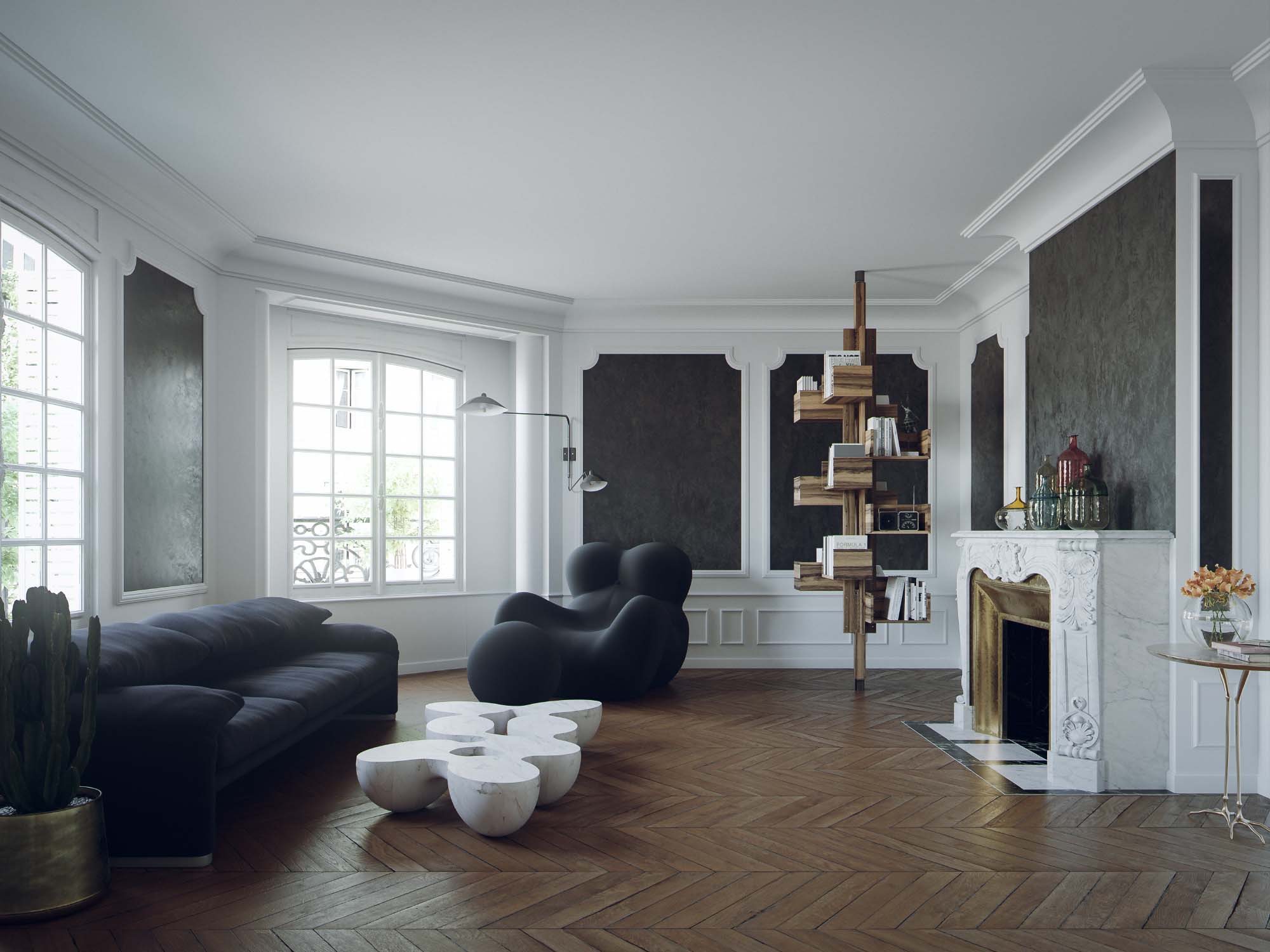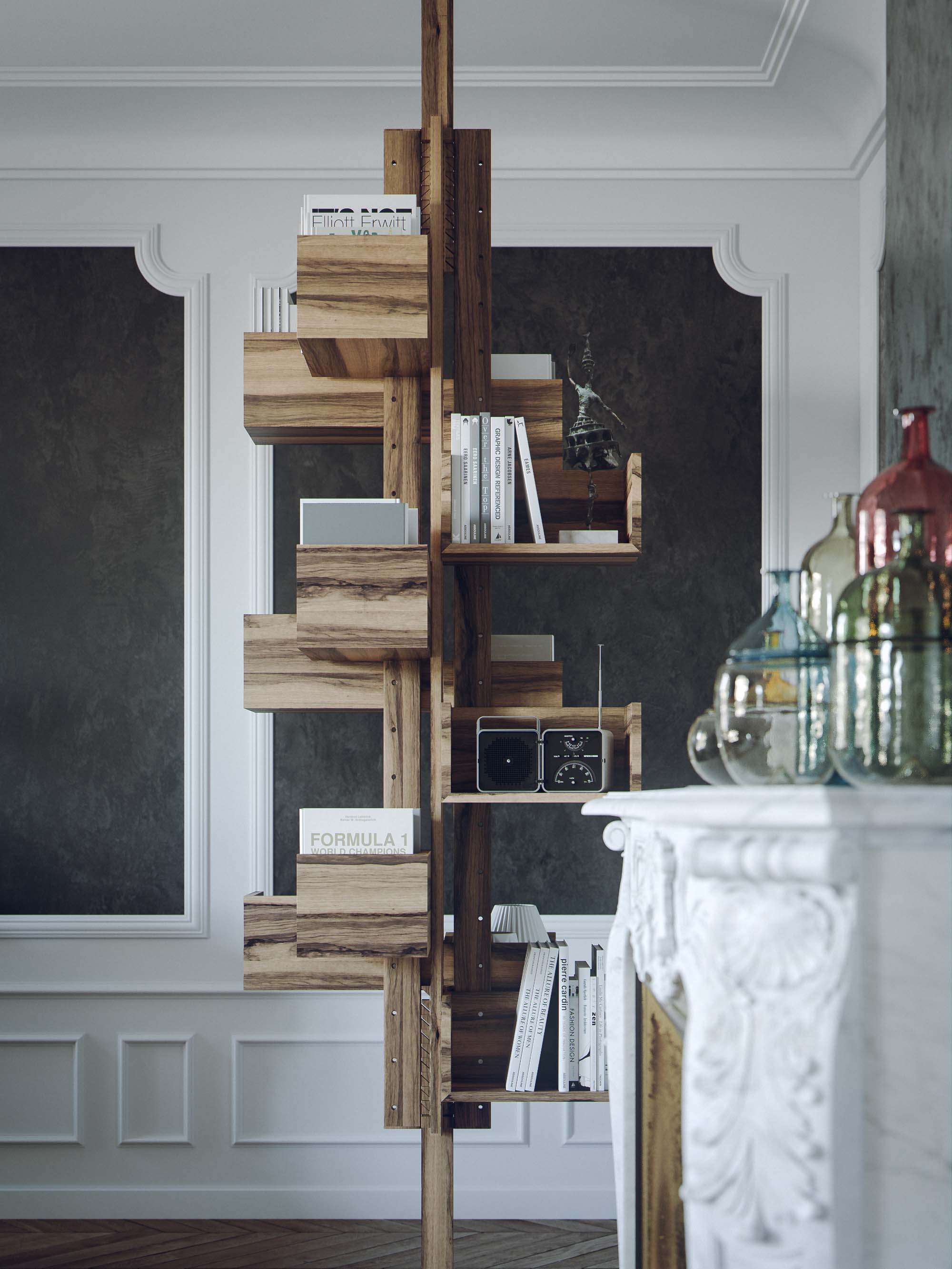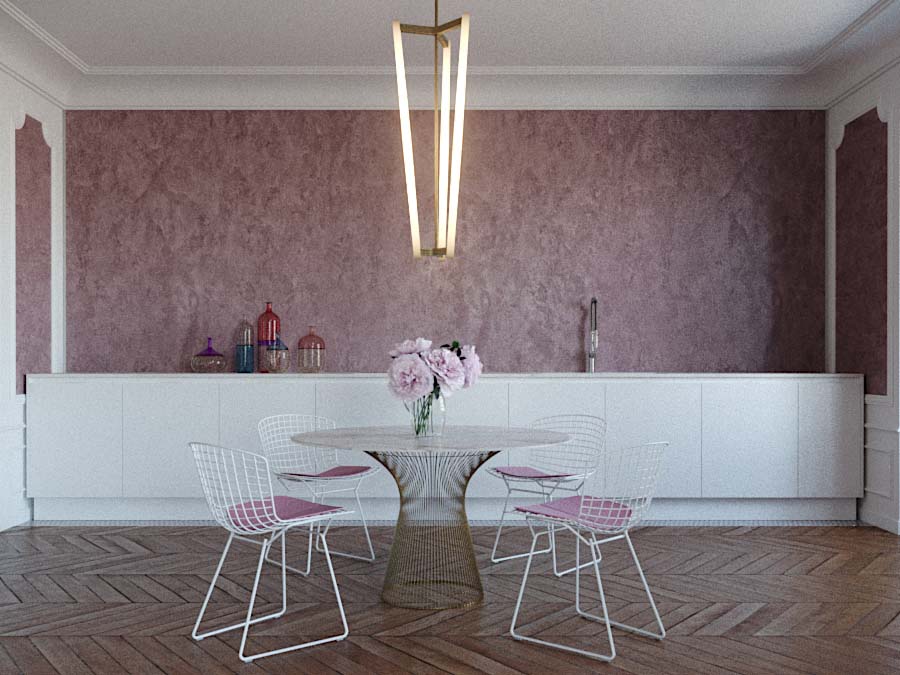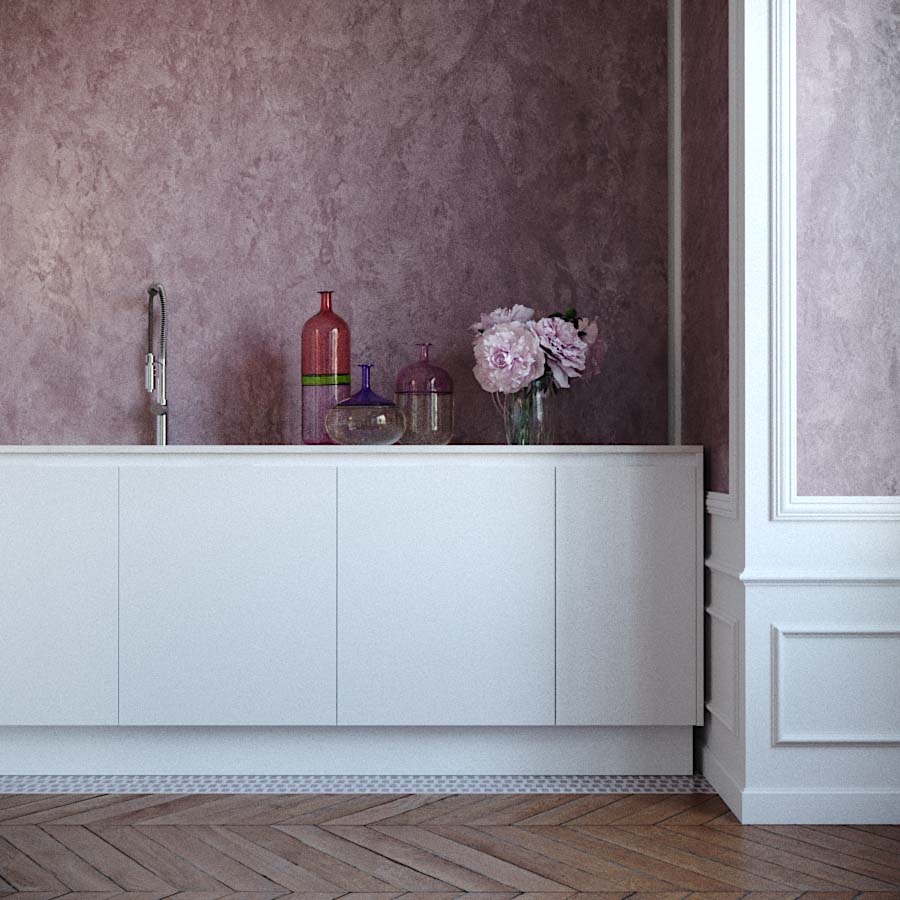The Marmorino, a now world-famous coating. But it’s not just its resistance that makes marmorino attractive. Its sheer finesse, light glossiness and marbled transparency make it a material of the utmost elegance, that generated a lot of excitement, not only in Venise but also very quickly in the rest of Europe.
A brief history of marmorino
Marmorino is an ancient technique that dates back from more than a thousand years. It consists in using a special paste to create embossed designs on walls.
It was used extensively in the Renaissance in the works of Sansovino and Palladio, and across the famous venetian Settecento. Venice, the city that best magnifies marmorino’s beauty; The majestuous walls of the city’s palaces are transcended when the sunlight is reflected on the waters of the canal, highlighting the splendour of marmorino’s brightness, glow and the colours.
There is another reason that would explain such a widespread adoption of the technique in the Serenissima: Marmorino has the amazing capacity to protect the walls and the foundations of the buildings from damp, which is particularly useful in this city where water is continually rising.
More recent examples of the use of stucca as a decorative element can be found in Art Nouveau, or in the mid-20th century, where marmorino was extensively used as a base in many of the great works by architect and “Maestro” Carlo Scarpa.
The technique
The lime is manipulated by the plasterer. Working alongside architects, stone carvers, painters and carpenters, this artisan and art master transforms any wall in shiny surfaces, whose transparent moiré effect is typical of the technique.
To obtain the paste, the plasterer mixes the lime with pigments, water and marble powder. The paste is then spread onto several layers and the surface is smoothed with a spatula, which allows the marble powder to penetrate.
Once the mix is applied, it is finally pressed, and polished.
Marmorino today
Thanks to its distinctive capacity to magnify the surfaces it is applied to, marmorino is still today at the heart of the most elegant decorative projects.
This prestigious technique can be applied to all kinds of interiors: whether classical or modern, they will be transformed by its simple and immortal elegance.
Just like a precious robe with infinite colours, marmorino will bring light into your house, and wrap your walls with refined nuances and tones.
Marmorino is free of any chemicals. All pigments added to the paste are natural, respecting a rich artisanal tradition able to conquer international markets.
Works featuring this technique
